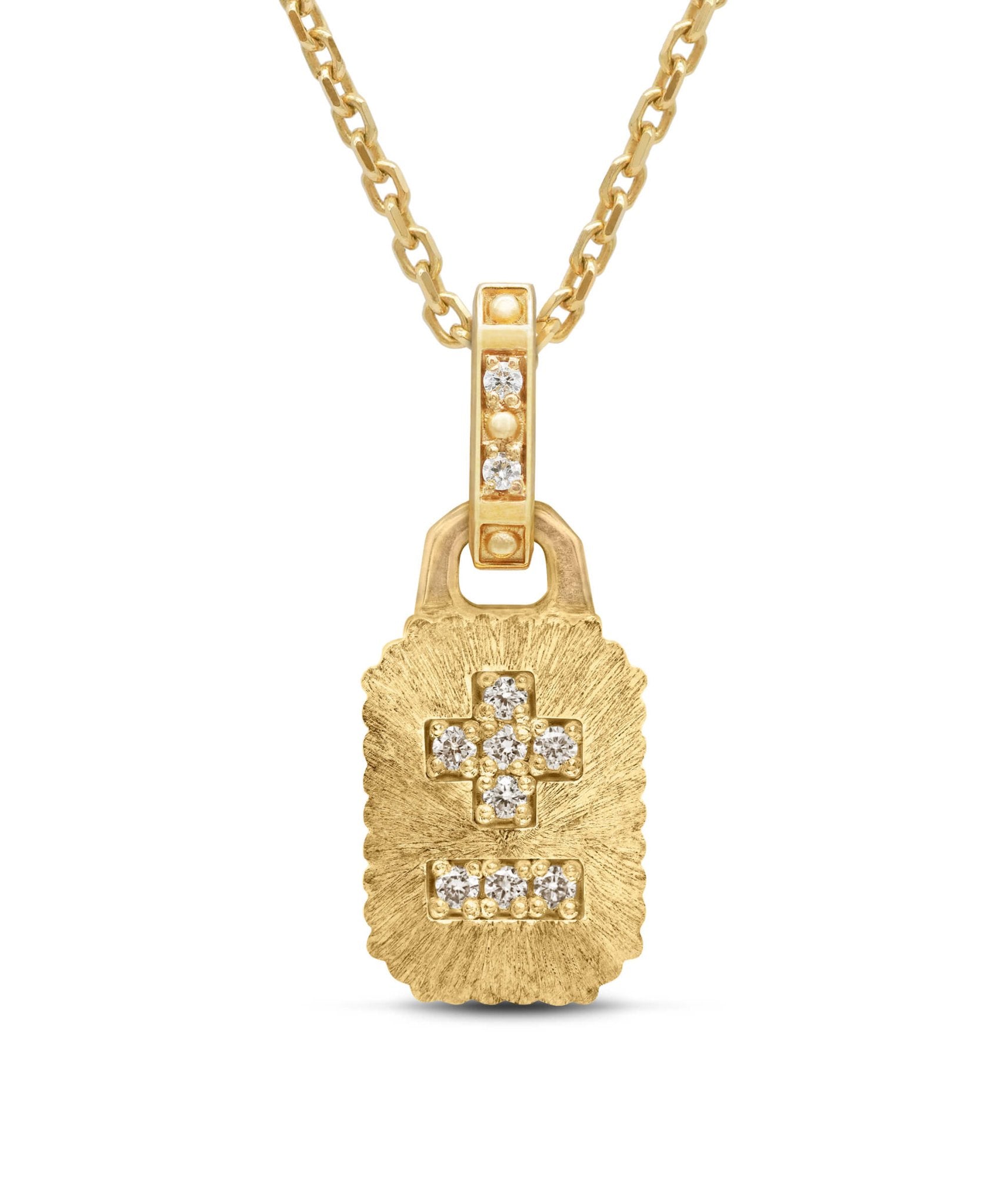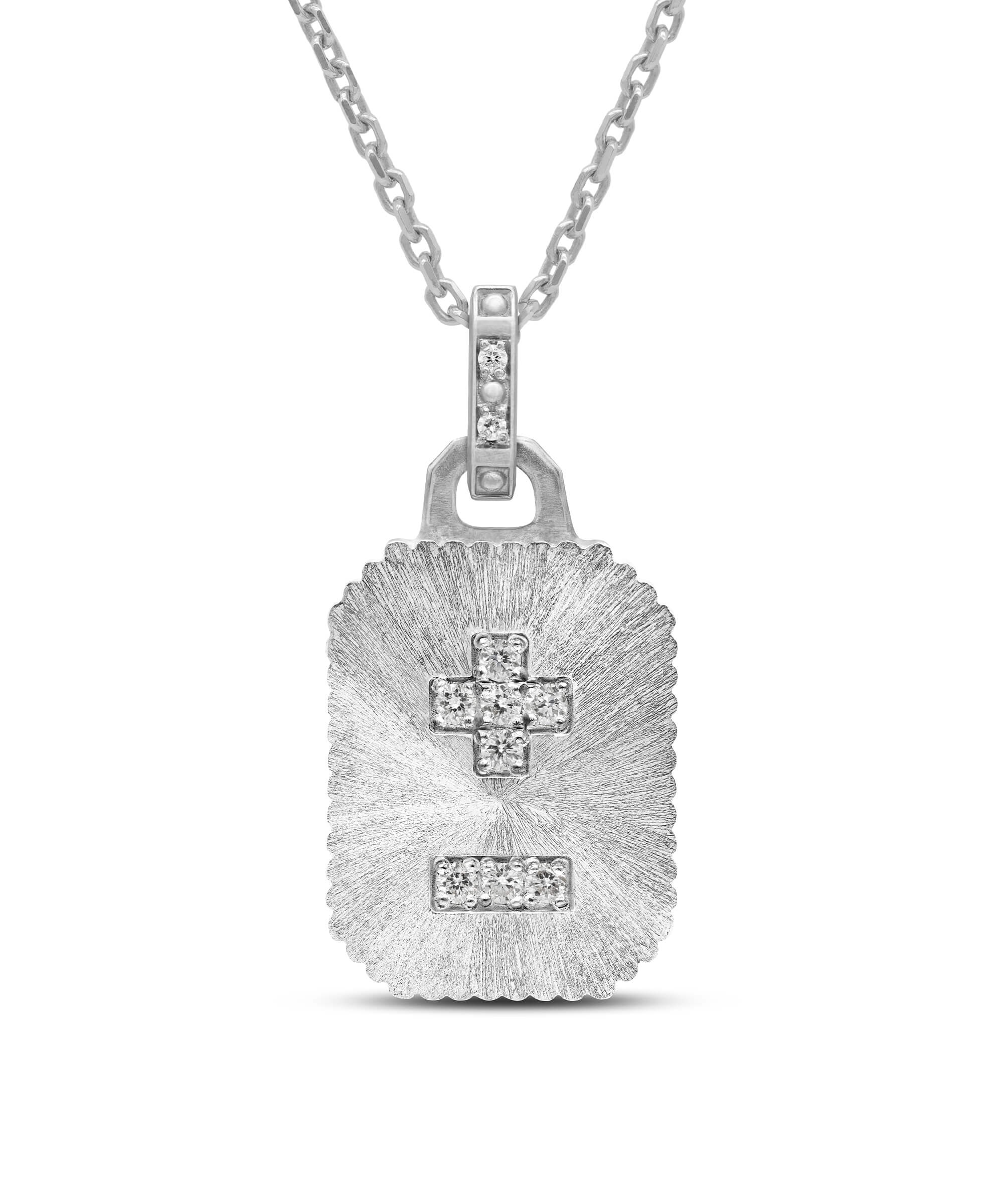The thorn symbol has played a significant role across various cultural, mythological, and literary contexts, representing themes such as strength, resilience, and protection. From ancient mythology and medieval symbolism to modern literature and jewelry, thorns embody the balance between beauty and defense. This text explores the thorn's evolving meanings, highlighting its use in mythology, fairy tales, art, literature, and personal adornment. Through different stories and interpretations, the thorn serves as a powerful emblem of nature's protective power and the enduring human spirit.
Amuletha™ Book of Symbols
Thorn Symbol
*Self-Portrait with Thorn Necklace and Hummingbird by Frida Kahlo
This painting is charged with a quiet defiance, despite the palpable pain, there is a refusal to yield. The portrait portrays Kahlo as unflinching in the face of her struggles, using nature and myth as vehicles for her personal narrative. The atmosphere is dense with both beauty and tension, as Kahlo reclaims her narrative through imagery that balances fragility and strength.
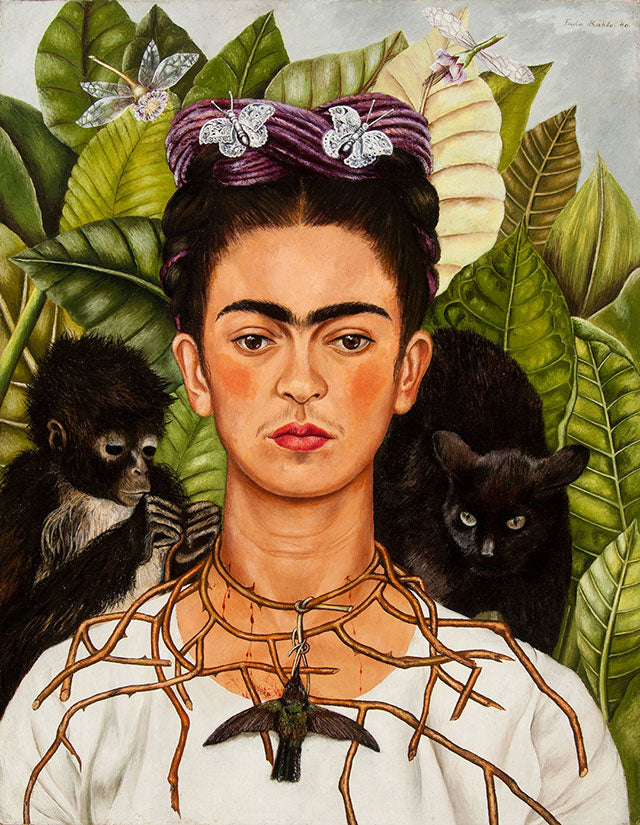
*Self-Portrait with Thorn Necklace and Hummingbird by Frida Kahlo
This painting is charged with a quiet defiance, despite the palpable pain, there is a refusal to yield. The portrait portrays Kahlo as unflinching in the face of her struggles, using nature and myth as vehicles for her personal narrative. The atmosphere is dense with both beauty and tension, as Kahlo reclaims her narrative through imagery that balances fragility and strength.
THORN SYMBOL ORIGIN
The thorn symbol has long represented strength, resilience, and the protective power of nature. Its origin can be traced back to early civilizations that admired the thorn for its ability to guard and preserve life. In nature, thorns serve as a natural defense mechanism, protecting plants from harm and ensuring their survival. This connection to protection and endurance made the thorn an important symbol across different cultures. In ancient Greece, for example, the thorn was revered as a symbol of perseverance, representing the tenacity of life in even the harshest conditions.
During the Middle Ages, the thorn’s protective qualities gained prominence, symbolizing guardianship and vigilance. It was often used in crests and emblems to signify watchfulness and a steadfast commitment to safeguarding what is cherished. Thorns became associated with strength, not just in the physical sense, but also in terms of emotional and spiritual fortitude. They were seen as symbols of boundaries, ensuring that what is precious is preserved and protected, reinforcing the idea of safety and stability.
As the symbol continued to evolve through Renaissance art and literature, the thorn began to embody a sense of growth and self-reliance. Just as a plant with thorns flourishes despite potential threats, the symbol came to represent an individual’s ability to thrive, while maintaining personal boundaries and inner strength. The thorn, with its dual purpose of defense and flourishing, stands as a positive reminder of how we can guard our well-being while growing and thriving in life’s challenges.
What does thorn symbolize
The thorn symbol carries profound meaning across different cultures and time periods. Below are four of its most widely recognized interpretations:
Growth
They represent the challenges and trials that test our strength and encourage personal growth, illustrating the transformative power of adversity.
Resilience
Thorns symbolize the protective barriers we set to shield ourselves from harm, as well as the resilience required to face life's adversities.
Strength
Thorns highlight the importance of maintaining boundaries and safeguarding one's well-being, signifying the strength that comes from being both vulnerable and protected.
Cultural mention
Thorns have long held symbolic significance across various cultural myths and stories, often representing protection, resilience, and the delicate balance between beauty and danger. From Norse mythology's sacred Thor’s Oak to the enchanted brambles of Sleeping Beauty, thorns are seen as nature's guardians, shielding the sacred and the vulnerable alike. This symbolism is also reflected in European representations of the rose, where thorns serve as necessary protectors of the flower’s elegance. Together, these stories highlight the thorn's role as both a physical and spiritual guardian throughout history and folklore.
The Sacred Tree of Thor
In Norse mythology, the thorn was closely associated with the sacred Thor’s Oak, a symbol of strength and protection. Surrounded by thorny bushes, the oak was believed to be guarded by Thor, the god of thunder. These thorns were seen as nature’s defense, ensuring that sacred spaces remained undisturbed by harm. Early Germanic tribes viewed the thorn as a powerful emblem of divine protection, signifying resilience and safety. This mythological connection underscored the thorn’s role as a guardian of both physical spaces and spiritual realms.
*Boniface chops down an oak tree in Hesse, engraving by Bernhard Rode, 1781
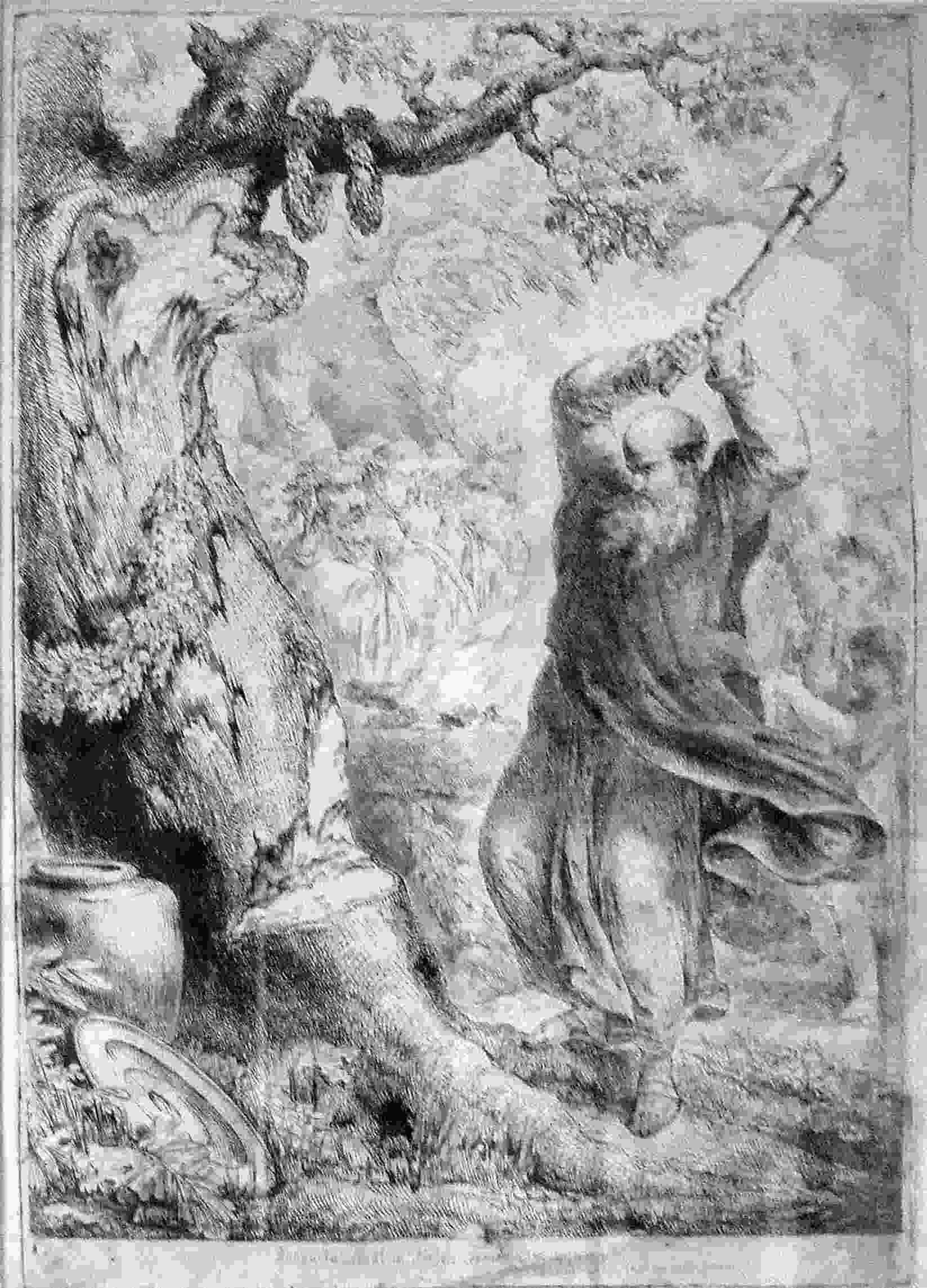
*Boniface chops down an oak tree in Hesse, engraving by Bernhard Rode, 1781
Sleeping Beauty’s Enchanted Thorns
In Sleeping Beauty, one of the most iconic fairy tales, thick thorny brambles grew around the princess’s castle, safeguarding her as she slept under an enchantment for a hundred years. Rather than being an obstacle of harm, these thorns represented a natural shield, keeping unwanted dangers at bay until the destined moment of her awakening. Symbolically, the thorny hedge illustrated the themes of patience, preservation, and protection, ensuring that the princess and her kingdom would remain untouched until the time was right for renewal and love to triumph.
*Illustration by Errol Le Cain
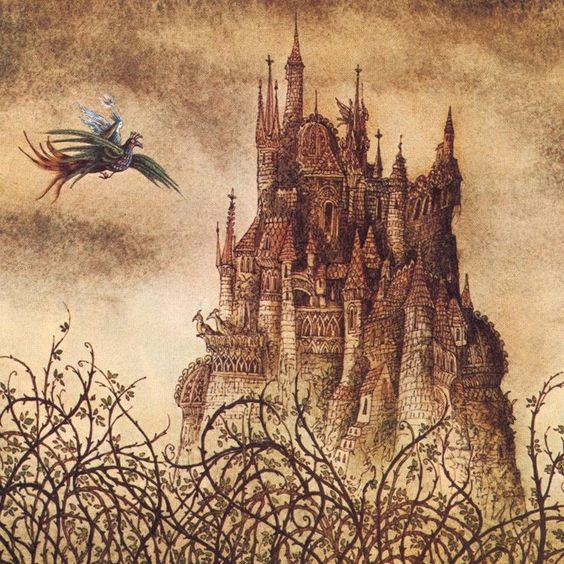
*Illustration by Errol Le Cain
The Rose and Its Thorns
In European symbolism, the rose and its thorns are often used to represent the balance between beauty and protection. The delicate petals of the rose are guarded by sharp thorns, symbolizing that what is truly valuable and beautiful must be protected. This imagery suggests that the thorn is not a negative force, but rather a necessary guardian of the rose’s elegance. The combination of the rose and thorn conveys that strength and beauty coexist, and that true grace often requires protection, a theme explored in European art and poetry.
*The arms in an album from around 1910
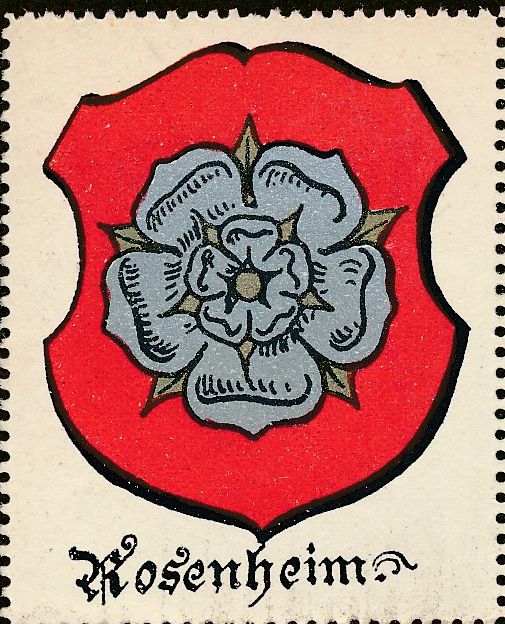
*The arms in an album from around 1910
Thorn symbol in the world of jewelry
Thorn-inspired jewelry often appeals to those who value strength, resilience, and the importance of personal boundaries. It is worn by individuals who wish to express their inner fortitude and protective nature. Many choose thorn-themed pieces as a symbol of self-reliance, representing their ability to face life’s challenges while preserving their sense of personal space. The thorn's protective symbolism resonates deeply with people who want to convey their resilience, often carrying spiritual or protective meanings that exude strength and perseverance.When given as a gift, jewelry featuring the thorn symbol embodies protection, strength, and a deep sense of care. It serves as a token of safeguarding, signifying the giver’s desire to protect the recipient from hardship or adversity. Such gifts carry a meaningful message of trust and support, often marking significant milestones like new beginnings or challenges, where the giver hopes to inspire strength in the wearer.
What does a thorn symbolize in literature?
The thorn symbol has been widely used in literature to evoke themes of protection, resilience, and boundaries. Symbols like thorns are frequently employed in works that explore the complexities of human nature, emphasizing strength in adversity. Thorn symbols often appear in literature that deals with personal growth, emotional depth, and the balance between beauty and defense. Thorn motifs are particularly common in poetry and classical literature, where they represent both nature’s duality and personal fortitude. This section will explore examples from renowned authors and works that feature thorns as a significant symbol.
"The Little Prince" by Antoine de Saint-Exupéry
In this novel, the rose’s thorns are discussed in terms of protection, with the rose claiming they guard her from harm. The thorns become a metaphor for the rose’s vulnerability, as well as her strength, highlighting the duality of the symbol. Saint-Exupéry uses this imagery to explore themes of love, fragility, and the importance of protection in relationships, all encapsulated within the simplicity of a thorn.
“Little prince” watercolor sketch by Antoine de Saint-Exupéry
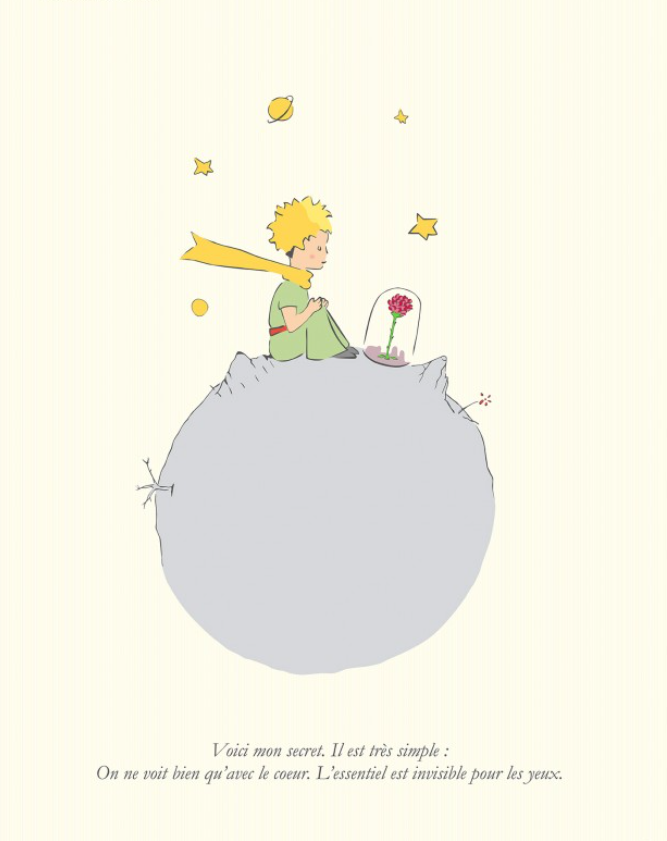
"The Waste Land" by T.S. Eliot
2April is the cruellest month, breeding
Lilacs out of the dead land, mixing
Memory and desire, stirring
Dull roots with spring rain.
The imagery of "dull roots" and the harshness of April evoke a sense of struggle and discomfort, much like the presence of thorns. Eliot’s lines suggest how growth and renewal often come with pain, as thorns do, symbolizing the difficult process of confronting and overcoming life's challenges.
"The Thorn" by William Wordsworth
There is a thorn; it looks so old,
In truth, you'd find it hard to say,
How it could ever have been young.
Wordsworth’s thorn represents endurance and the passage of time, connecting the natural world to the persistence and resilience of life itself.
"Paradise Lost" by John Milton
Thorns also and thistles it shall bring thee forth
Unbid; and thou shalt eat the herb of the field.
Milton directly references thorns as part of the fallen world’s curse, symbolizing suffering and toil. The imagery conveys the inevitability of hardship in human life, with thorns representing the struggles that arise unbidden, shaping the human experience.
Thoughts
Thoughts placed alongside a symbol resonate with its meaning, serving as a guide to expand your understanding of the symbol's significance in relation to your personal experiences. AMULETHA™ also embraces this approach, invites a deeper contemplation of how symbolic meanings can reflect and enrich your life’s narrative, enhancing your appreciation of both the symbol and its broader implications.
Trials of Transformation - Thorns remind us that challenges foster growth, urging us to embrace adversity as a powerful force for personal evolution.
Barriers of Resilience - They embody the protective walls we build, representing the strength we summon to endure hardships and safeguard our inner selves.
Boundaries of Power - Thorns signify the importance of setting boundaries, illustrating that true strength comes from balancing vulnerability with self-protection.
FREQUENTLY ASKED QUESTIONS
Which plants are known for having thorns?
Many plants have developed thorns, spines, or prickles as natural defense mechanisms to protect against herbivores. Examples include roses with prickles along their stems, cacti with spines to reduce water loss, and blackberries and raspberries with prickles on their stems. Hawthorn and bougainvillea feature sharp thorns for protection and support, while acacia trees often have spines that also host protective ants. Trees like the honey locust have long thorns on their branches, and holly plants use spiny leaves as a deterrent. Other thorny plants include firethorn (Pyracantha) and barberry, both of which are commonly used in defensive hedging due to their dense, spiny growth.
Do thorns have any medicinal properties?
While thorns themselves don't have medicinal properties, many thorny plants do. For example, hawthorn is used for heart health, barberry supports digestion and liver function, and prickly pear cactus offers anti-inflammatory benefits. These plants provide medicinal value through their fruits, leaves, or roots, despite their thorns primarily serving as a defense mechanism.
Are there any animals that have adapted to specifically deal with or benefit from thorny plants?
Yes, several animals have adapted to thrive around thorny plants. Giraffes and camels, for example, have tough mouths that allow them to eat the leaves of thorny acacia trees without injury. Some birds, like shrikes, use thorns to impale prey for storage. Additionally, ants and acacia trees have a mutualistic relationship, where ants live in the tree’s thorns and protect it from herbivores. These adaptations help animals benefit from thorny plants despite their natural defenses.


















